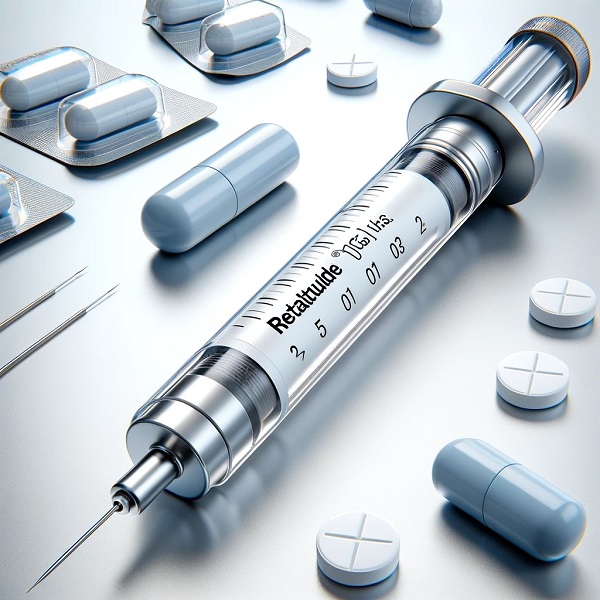What is Retatrutide
Retatrutide is an investigational drug being developed by Eli Lilly and Company for the treatment of obesity and type 2 diabetes. Retatrutide is developed under the name LY3437943
Retatrutide Timeline So Far
- Retatrutide first entered clinical trials in the year 2021. This initial phase of clinical trials was an important step in assessing the drug’s safety and efficacy.
- Retatrutide was expected to progress into Phase 3 trials in 2023, which would further evaluate its effectiveness and safety on a larger scale.
This timeline indicates the ongoing research and development process for this novel treatment option. For more detailed information, you can visit Retatrutide.org.
How Retatrutide Works
Retatrutide works by targeting three different receptors in the body: the gastric inhibitory polypeptide (GIP), glucagon-like peptide-1 (GLP-1), and glucagon receptors.
These receptors play key roles in regulating hunger and metabolism. GIP and GLP-1 are incretin hormones that stimulate insulin secretion from the pancreas, while glucagon is involved in glucose production in the liver. By acting on these receptors, Retatrutide helps in regulating blood sugar levels and reducing appetite, which contributes to weight loss. This multi-receptor approach is what makes Retatrutide a unique and potentially effective treatment for obesity and type 2 diabetes.
What is Triple G
“Triple G” is a nickname given to Retatrutide, an investigational drug developed for the treatment of obesity and type 2 diabetes.
This name derives from its mechanism of action, where it acts as an agonist on three different receptors: GIP (gastric inhibitory polypeptide or glucose-dependent insulinotropic polypeptide), GLP-1 (glucagon-like peptide-1), and glucagon.
By simultaneously targeting these three receptors, Retatrutide is believed to effectively manage blood sugar levels and aid in weight loss. This triple-receptor approach is a distinguishing feature of Retatrutide, setting it apart from other treatments.
Retatrutide Brand Name
Currently Retatrutide is being developed under the name LY-3437943, is an experimental drug and does not have a brand name yet. As it is still under development and investigation, it has not been assigned a trade name and remains known by its scientific designation.
Retatrutide Price
The specific price of Retatrutide is not readily available in the public domain. As we all know the drug is under research and clinical trials as of Jan 2024 at the time we are writing this article and has not yet been approved by FDA. The price of a drug can only be assigned after FDA approval when the medication is ready to be sold in pharmacies.
Retatrutide Dosing
Retatrutide, a new drug developed by Eli Lilly for obesity treatment, is administered as a subcutaneous injection once weekly. The initial dosage is expected to be 0.5 mg, and depending on the patient’s response, it can be increased to 1 mg, 2 mg, or 4 mg after 4 weeks. The maximum dosage recommended is 12 mg per week. It’s important to start with the initial dose to minimize the risk of side effects and then adjust as needed based on tolerance and response.
Source: The Lancet
Retatrutide Side Effects
Retatrutide, like other GLP-1 receptor agonists, may cause side effects, although these are generally mild to moderate.
The most common side effects reported in clinical trials include gastrointestinal issues like nausea, diarrhea, vomiting, and constipation. Some participants also experienced an increase in heart rate, particularly with higher doses, but this tended to decline after the first six months of treatment.
The side effects are similar to those observed with other weight loss drugs in the same class. It’s important to consult a healthcare professional for personalized advice and to understand the full profile of potential side effects.

